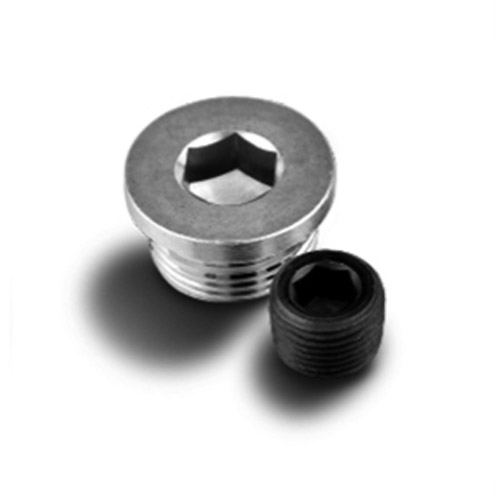

self clinching fasteners
Dec . 03, 2024 15:30 Back to list
self clinching fasteners
Understanding Self-Clinching Fasteners A Key Component in Modern Manufacturing
In the realm of modern manufacturing, the importance of efficient assembly and secure fastening cannot be overstated. Self-clinching fasteners have emerged as a significant innovation, particularly for applications where traditional fastening methods may fall short. This article delves into the mechanics, advantages, and applications of self-clinching fasteners, elucidating their crucial role in contemporary manufacturing.
What Are Self-Clinching Fasteners?
Self-clinching fasteners are specialized fastening devices designed to be installed into thin sheets of metal or plastic without necessitating additional components such as nuts or welds. They are characterized by their unique installation method, which involves inserting the fastener into a properly sized hole in the base material and then applying a force that causes the fastener's clinching section to deform. This deformation creates a permanent anchor point, ensuring a secure fit that resists loosening over time.
These fasteners come in various shapes and sizes, including nuts, studs, standoffs, and pins, making them versatile for a wide range of applications. They can be made from different materials, including stainless steel, aluminum, and plastic, allowing for compatibility with numerous project specifications.
Advantages of Self-Clinching Fasteners
1. Efficiency in Assembly One of the most significant advantages of self-clinching fasteners is the speed they bring to the assembly process. Traditional methods often require multiple components and extended assembly times, whereas self-clinching fasteners streamline this by providing a robust solution in a single step. This efficiency can drastically reduce the time and labor costs associated with manufacturing.
2. Space-saving Design The nature of self-clinching fasteners allows for a compact assembly, as they do not require additional hardware like nuts or washers. This saved space is especially beneficial in applications where minimizing weight and volume is crucial, such as in the automotive and aerospace industries.
self clinching fasteners

3. Strong and Reliable Joints Once clinched, these fasteners provide a permanent and vibration-resistant joint. They offer high torsional and pull-out strength, ensuring that the fastened assembly remains intact even under stressful conditions. This reliability is vital for applications in dynamic environments, such as machinery and electronics.
4. Material Versatility Self-clinching fasteners can be utilized in a variety of materials, particularly thin metals and plastics. This adaptability allows manufacturers to design products with different materials while using the same fastening solutions.
5. Minimal Surface Preparation The installation of self-clinching fasteners often requires minimal surface preparation. This aspect reduces both time and costs, enabling manufacturers to maintain a focused workflow without the need for extensive pre-installation processes.
Applications of Self-Clinching Fasteners
Self-clinching fasteners are commonly utilized in industries ranging from electronics to automotive and aerospace. In the electronics sector, for instance, they are ideal for creating secure connections in circuit boards and housing components without adding unnecessary weight. In automotive manufacturing, they are used in various assemblies, including dashboards and engine housings, providing a lightweight yet durable fastening solution.
The aerospace industry benefits from self-clinching fasteners due to their ability to withstand harsh conditions while maintaining reliability. Whether in aircraft interiors or structural components, these fasteners help ensure that systems function smoothly and securely.
Conclusion
In conclusion, self-clinching fasteners stand out as a vital component in modern manufacturing across numerous industries. Their benefits—a combination of efficiency, space-saving design, reliability, and versatility—position them as an optimal choice when hunting for effective fastening solutions. As manufacturing processes become increasingly sophisticated, the role of self-clinching fasteners will undoubtedly expand, catering to the evolving demands of diverse applications. Understanding these innovations is essential for manufacturers looking to enhance their assembly workflows and product integrity in an increasingly competitive market.
Latest news
-
High-Strength Hot Dip Galvanized Bolts - Hebei Longze | Corrosion Resistance, Customization
NewsJul.30,2025
-
Hot Dip Galvanized Bolts-Hebei Longze|Corrosion Resistance&High Strength
NewsJul.30,2025
-
High-Strength Hot-Dip Galvanized Bolts-Hebei Longze|Corrosion Resistance&High Strength
NewsJul.30,2025
-
Hot Dip Galvanized Bolts-Hebei Longze|Corrosion Resistance&High Strength
NewsJul.30,2025
-
Hot Dip Galvanized Bolts - Hebei Longze | Corrosion Resistance, High Strength
NewsJul.30,2025
-
High-Strength Hot Dip Galvanized Bolts-Hebei Longze|Corrosion Resistance, Grade 8.8
NewsJul.30,2025

